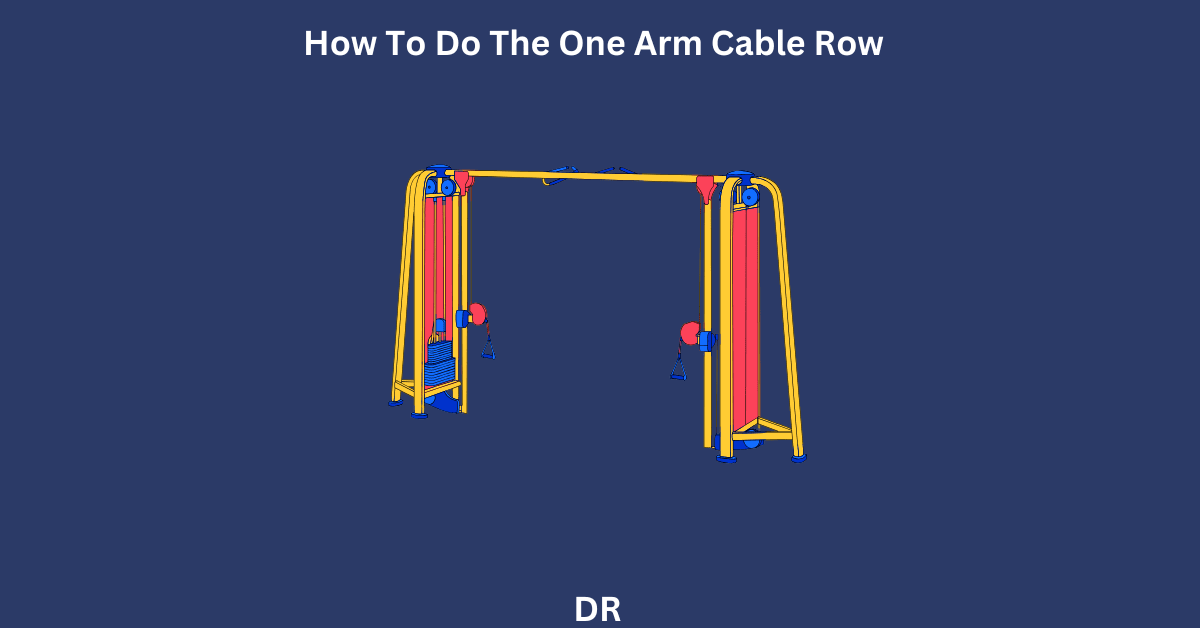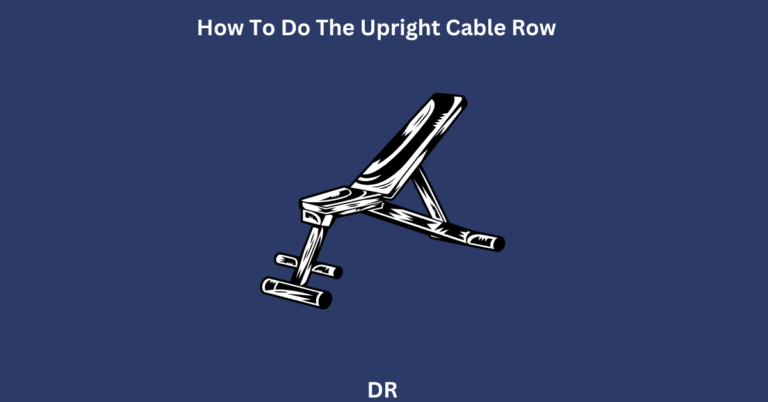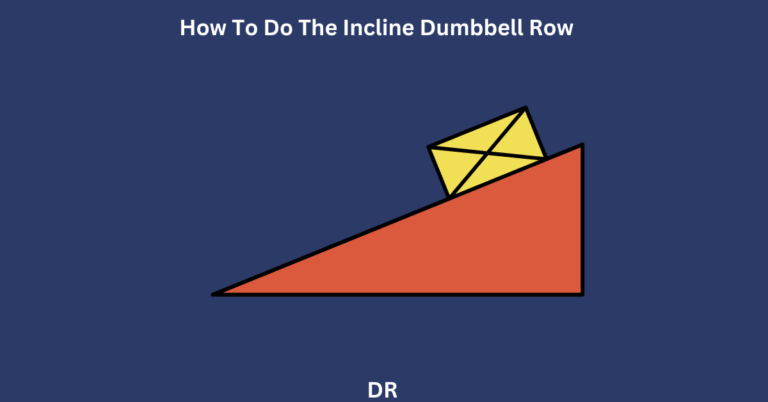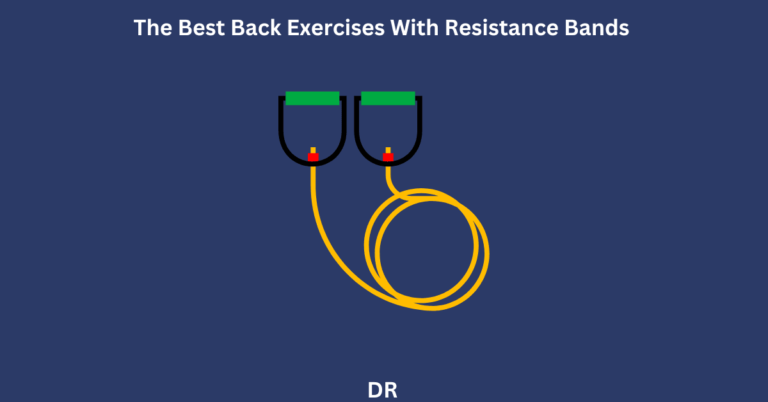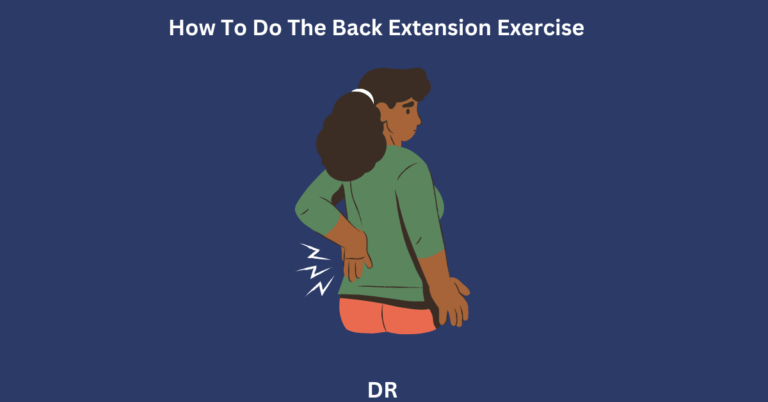How To Do The One Arm Cable Row, the best method in 2024
Back Workouts Overview
Getting that back in shape isn’t just about looking like a Greek statue; it’s about packing some serious strength and making life a bit easier. A strong back is like that reliable mate who shows up anytime you need heavy lifting, literally and metaphorically.
Importance of Back Workouts
Back workouts are a must-have in any good fitness plan. They build the muscles that keep you upright and steady, whether you’re lifting weights or just groceries. And honestly, who wants to be known as the one with dodgy posture?
When you beef up those back muscles, you’re also doing wonders for your posture. Standing tall not only helps with the spine but might just save you from those “I’m getting old” backaches. Plus, a strong back makes handling daily chores, like lifting your groceries or surviving a long queue at the shops, much less of a challenge. The tried-and-true moves, like the seated cable row or one arm cable row, get the job done on these muscles.
Benefits of Strengthening Back Muscles
Pumping up the back muscles does more good than just making you look fit; it’s also about making sure everything works smoothly.
1. Better Posture: A strong back helps you keep your spine in line, which is a big deal for posture. Slouch less, stress less — it’s as simple as that.
2. Reduced Risk of Injuries: Get cosy with exercises like the single arm dumbbell row or dumbbell row, and you are looking at a more stable body with a reduced chance of getting hurt. Beefed-up back muscles also mean your shoulders are less likely to give out on you during sports or any overhead action.
3. Enhanced Athletic Performance: A robust back isn’t just for show; it’s your secret weapon in many sports. Whether it’s rowing, swimming, or a cheeky bit of running, sturdy lats and rhomboids will give you that edge.
4. Improved Functional Strength: When it comes to the usual life stuff, like lifting and carrying, training your back muscles means you can do these tasks way more easily and safely. Try the back extension exercise for a little extra support.
5. Aesthetic Appeal: A well-defined back isn’t just for flexing in the mirror — it rounds out that dream physique. Mixing up your routine with exercises like back exercises for lats and mid back exercises helps grow a balanced set of muscles.
Here’s a quickie on why these are the bee’s knees:
| Benefit | Description |
|---|---|
| Better Posture | Keeps that spine happy and aligned |
| Reduced Injury Risk | Strengthens shoulders and balances your body |
| Athletic Performance | Boosts power and stamina |
| Functional Strength | Makes everyday tasks a breeze |
| Aesthetic Appeal | Builds that dreamy, balanced physique |
Check out our goodies on upper back exercises and cable back exercises for more tricks and tips to pump up your back game. Whether you’re just getting started or smashing through the intermediate level, these workouts are sure to crank up your back strength and take your fitness to the next level.
Seated Row Exercises
Lifting weights ain’t just about flexing those biceps; it’s your ticket to a stronger back and better posture. So, let’s chat about seated cable rows – they’re a must-try for anyone from gym rookies to the not-quite-Arnie crowd.
Why Seated Cable Rows Rock
With seated cable rows, you’re not just lifting weights; you’re upgrading your upper body game. Here’s the lowdown:
- Builds Upper Body Power: These exercises hit those lat muscles, rhomboids, and traps like a well-aimed punch, giving you the upper body strength upgrade you want.
- Straightens You Out: Do these regularly, and watch your posture get the attention it deserves, with your spine standing tall and proud.
- Armour for Your Shoulders: By strengthening shoulder muscles, you’re setting up a defence squad to guard against unexpected injuries.
- Cuts Back on Injuries: Strong, balanced muscles mean you’re less likely to get hurt while living life or working out.
How To Nail Seated Rows
Getting the hang of seated rows is key to making the most of them and keeping injuries away. Here’s a quick guide:
- Get Set:
- Park yourself on the rowing machine seat.
- Firmly plant your feet on the platform, knees slightly bent.
- Grab the handle with your paws, not too wide or too narrow.
- Pull Away:
- Y’know, tug that handle towards you with your spine straight and arms cosy by your side.
- Feel the squeeze between your shoulder blades as the handle makes its way to your midriff.
- Let the handle take a leisurely trip back to the start, keeping your cool and control.
- Oops-Free Zone:
- Don’t let your back hunch like Quasimodo.
- Keep things smooth; no yanking that weight like it’s a lawnmower cord.
Spice Up Your Seated Rows
Plain old seated rows can get stale. Mix things up to keep things fun and challenge different muscles:
- Wide-Grip Seated Row: This style zones in on those little muscle players in the back and arms, like your posterior deltoid and pals.
- Resistance Band Row: Swap the machine for bands – they’re perfect for home sessions, still working those trusty lats and rhomboids.
- Seated Row vs. Cable Machine: They’re like cousins; both get the job done, but the cable gives you more room to play with resistance.
Don’t stop there; discover other back-busting moves like dumbbell rows or the powerful barbell rowto round things out.
| Gear | Main Muscles in Action | Backup Crew |
|---|---|---|
| Seated Row Machine | Lats, Rhomboids, Traps | Biceps, Posterior Deltoid |
| Cable Row Machine | Lats, Rhomboids, Traps | Biceps, Posterior Deltoid |
| Resistance Bands | Lats, Rhomboids, Traps | Biceps, Posterior Deltoid |
Looking for a playbook on more back workouts? Peek into our cable back collection and pump up the upper back catalog.
Single-Arm Dumbbell Rows
Ah, the single-arm dumbbell row. It’s that friend at the gym who always has your back—literally. Whether you’re looking to beef up those back muscles or fix a wonky balance between sides, this trusty move’s got you covered.
Technique for One-Arm Dumbbell Rows
Want to ace the one-arm dumbbell row? Stick to the script:
- Starting Position: Park one knee and the same-side hand on a bench. It should feel like home base, sturdy and safe. The other foot’s doing its own thing, grounded. Grab a dumbbell in the free hand, arm dangling like a monkey’s tail.
- Movement: Pull that dumbbell up to your waist, like you’re starting a lawnmower. Keep your elbow snug to your side.
- Return: Let’s not drop it like it’s hot. Glide the dumbbell back down with control—slow and steady wins the race.
This routine gives a full swing, shining a light on any lazy muscle bits that need catching up. With the bench backing you up, say bye-bye to unnecessary strain on your lower back (Muscle & Fitness).
Integrating One-Arm Rows in Workouts
These rows can’t wait to jump in and mix things up in your training session:
- As the Main Attraction: Kick-off your back day with these rows and some heavy dumbbells to get the muscles shouting. It’s all about packing on strength and size.
- In the Thick of It: Slide them in mid-workout after you’ve hammered out bigger lifts like barbell rows. Dial in some specific focus and balance.
- As the Grand Finale: Finish strong with light weights, high reps, and leave no muscle fiber untouched.
Slice these moves into your routine, and you’re looking at a back Hercules would envy. For all the good stuff on dumbbell back magic, see dumbbell back exercises.
Sample Workout Integration
| Exercise | Sets | Reps |
|---|---|---|
| Barbell Row | 4 | 6-8 |
| One-Arm Dumbbell Row | 3 | 10-12 |
| Lat Pulldown | 4 | 8-10 |
| Dumbbell Seated Row | 3 | 8-10 |
| Back Extension | 3 | 12-15 |
Keep tinkering with weights and reps like you’re crafting a masterpiece. For spicing up your routine, have a gander at single arm dumbbell row, dumbbell row, and upper back exercises.
One Arm Cable Row
Forget plain old back exercises – if you’re looking for strength and definition, the one-arm cable row is your mate. Let’s chat about which muscles you’re gonna work, the gear you’ll need and who’s gonna love this move.
Muscles Targeted in Cable Row
When you’re pulling that one-arm cable row, your middle back’s doing most of the heavy lifting. We’re talking about the lats, rhomboids, and traps. Your shoulders and triceps are in the mix too, but they’re more like the backup dancers here (Check it out).
| Muscle Group | Primary/Secondary |
|---|---|
| Latissimus Dorsi | Primary |
| Rhomboids | Primary |
| Trapezius | Primary |
| Shoulders (deltoids) | Secondary |
| Triceps | Secondary |
Equipment for Cable Row
To get the one-arm cable row going, you’ll hit up a cable machine. This trusty gadget is a staple in gyms and is perfect for jazzing up your back workouts. You’ll want a single handle attachment so each side of your back gets its fair share of love.
If you’re just dipping your toes in, don’t play Superman with the weights. Pick something that lets you keep your form in check. Going too heavy means you’re likely to swing around like a windmill or turn your arms into the show’s star (See for yourself).
Who Can Benefit from Cable Row
This exercise isn’t picky. It’s got something for everyone, from gym rookies to the folks who have been benching their bodyweight since last decade. Here’s who’s gonna dig it:
- Spot and Fix Weak Links: If you’re dealing with back muscles that don’t chat with each other, this can iron out those wrinkles. Even out any left-right strength gaps and bulk up symmetrically (Don’t just take my word for it).
- Boost Muscle Clout and Steadiness: The one-arm cable row isn’t just flex time – it’s about getting those shoulder blades locked tight and strong, which gives your upper body some major stability.
- Perfect for Newbies: It’s simple, it’s effective – a winning combo for folks just getting started with weights (See the praise).
Thinking about adding this to your regular workout? Mix it up with other upper back workouts or toss it into a total body plan for top-notch fitness. Want more workout magic? Check out our pages on cable back exercises and multi-muscle back exercises.
Common Mistakes to Avoid
When tackling the one arm cable row, getting your technique spot-on is crucial to reaping all the benefits and steering clear of any nasty injuries. Let’s chat about some typical slip-ups and what they mean for your workout.
Errors in Cable Row Execution
When you’re getting into the groove of the one arm cable row, there are a few hiccups that might trip you up or even mess with your safety. Here’s a heads-up on what not to do (BarBend):
- Going Too Heavy: Trying to move a mountain won’t impress anyone if it means your form goes belly-up and you’re putting your body through the wringer.
- Moving Too Fast: Whizzing through reps isn’t giving your muscles a fair shot to fire up or keeping injuries at bay.
- Using Too Much Arm Movement: Letting your arms steal the show instead of letting your back muscles do the heavy lifting? Big nope.
- Excessive Body Motion: Swinging or leaning like you’re on a boat? Your muscles won’t get the attention they deserve.
| Mistake | Description |
|---|---|
| Going Too Heavy | Strains muscles and joints, compromises form |
| Moving Too Fast | Reduces muscle engagement, raises injury risk |
| Using Too Much Arm Movement | Diminishes back muscle engagement |
| Excessive Body Motion | Reduces isolation of targeted muscles |
Impact of Mistakes on Effectiveness
These missteps can throw a wrench in the works:
- Going Too Heavy: Your form falls apart and you’re asking for trouble with injuries.
- Moving Too Fast: Your muscles miss out on the party and your gains get short-changed.
- Using Too Much Arm Movement: Your back muscles get left out, which is the whole point of the exercise, isn’t it?
- Excessive Body Motion: Your target muscles get sidelined, making your workout less effective.
To really nail the one arm cable row, think slow and steady. Keep those back muscles engaged, hold your stance rock-solid, and pick a weight that doesn’t make you feel like you’ve bitten off more than you can chew. Interested in more back workouts? Peep our guides on seated cable row exercises and dumbbell row. A killer back is within reach if you dodge these traps. And for a workout that’s got your whole body covered, check out full body workout routines.
Benefits of Single-Arm Cable Row
Finding those Lopsided Muscles
The single-arm cable row is a superstar for finding and fixing any wonky muscles that you’ve got going on. When you work each arm by itself, you can uncover which side is slacking on the job. This is especially helpful for bodybuilders, weekend warriors, or anybody looking to sport a lean and mean back (BarBend). Sort out these little mismatches, and you’re well on your way to not just looking good, but performing like a pro, too.
| Big Gains | What’s Cookin’? |
|---|---|
| Spot the Weak Spots | Working arms solo, you can zero in on any sneaky strength gaps. |
| Buff Up Those Weaklings | Giving some love to lagging muscles means they can finally start carrying their weight. |
| Get that Symmetry | Balance out both sides, so you won’t end up looking like a Picasso painting in your gym photos. |
If you want more ways to smooth out those hiccups and ramp up your back-game, you might wanna add some dumbbell back exercises to your hustle.
Pump Up the Muscle Power and Balance
Beyond just fixing up your symmetry, the single-arm cable row is killer for packing on muscle power and ironing out stability in your upper and mid-back. It’s a real multitasker, pulling in muscle groups like your lats, traps, rhomboids, and even those biceps, all while making sure your core and shoulders stay stable (Exercise.com).
Zeroing in on one arm really lets you hone your scapula control, which is kinda like the base of a winning play for safe and epic lifts. This practice leads to better showing in moves like the barbell row and dumbbell row.
| Body Bits | How They’re Working |
|---|---|
| Upper Back | Fires up the lats, traps, and rhomboids—hello, stronger, more steady upper back. |
| Biceps | Engages the biceps with the pull, so those guns get more than just showy. |
| Core | Holds the fort strong to keep you from tweaking your lower back. |
For more nuggets on boosting your back game, dive into our pieces on upper back exercises and cable back exercises.
By mixing the single-arm cable row into your sweat sessions, you’re tackling muscle mismatches and crafting a sturdy, balanced back-piece. Don’t forget to shake it up with new twists and tricks to keep things fresh and tough. Peek at our guide for jazzing up your lats with back exercises for lats.
Cable Row Variations
Having a bit of fun with different cable row styles can spice up your workouts. It lets you hit those back muscles from all sorts of angles, keeping things fresh. Here, we’ll take a peek into seated and standing rows and throw in some alternatives to the single-arm cable row.
Seated vs. Standing Rows
Both seated and standing rows have their perks and can fit into your gym routine depending on what you’re aiming for.
Seated Rows
Seated rows are like your bread and butter for a solid back. They let you concentrate on the exercise without putting too much stress on your legs. Perfect for working on the latissimus dorsi, rhomboids, and trapezius—if you fancy the science-y names. Plus, they give your lower back a bit of a rest, so even those just starting out or with a little lifting experience can give it a go (Verywell Fit).
Why They’re Great:
- Gentle on the lower back, less chance of hurting yourself.
- Lets you really zero in on upper back.
- Great for anyone with a dodgy lower half.
Standing Rows
Standing rows are like that all-star player, getting more muscles involved—specifically your core and your legs. It’s a bit of a whole-body workout wrapped into one. However, they do ask you to balance a bit more and get things under control.
Why They’re Awesome:
- Works out those core muscles, helping you stand tall.
- Offers a wider range of motion.
- Gives you a full workout, top to bottom.
| Exercise | Muscles Targeted | Difficulty | Lower Back Support |
|---|---|---|---|
| Seated Rows | Upper back, lats, traps | Beginner-Intermediate | High |
| Standing Rows | Full back, core, legs | Intermediate-Advanced | Low |
Alternatives to Single-Arm Cable Row
In the mood for a change or no cable machine nearby? There’s a bunch of ways to switch things up but still hit those back muscles just right.
Dumbbell Row
The trusty single-arm dumbbell row comes in handy and repeats the cable row moves. Helps even out those muscle imbalances one side at a time. Use a bench or go for the bend-over style—pick your fave.
Barbell Row
Getting into the barbell row adds some complexity as it targets multiple back muscles at once. Be on point with your form to keep things safe—invaluable for building a strong back.
Machine Row
Row machines offer a consistent move and are great if you’re worried about not getting your form spot-on. Keeps that pressure on the back muscles and substitutes for the cable row nicely.
For more tips on back workouts, check our pages on cable back exercises and dumbbell back exercises.
Other Alternatives:
Chuck some of these variations and alternatives into the mix, and your back development will be on point. Try a few, discover your favourites, and keep workouts both efficient and interesting.
Full Body Workout Routine
Why Full Body Workouts Rock
Full body workouts are my secret sauce for getting strong and looking good. And trust me; they’re not just for those gym buffs. These workouts offer a perfect mix of muscle building and cardio, squeezing the best results out of the time you spend sweating. Giving three days a week to full body workouts can really shoot up your fitness game, making you fitter, healthier, and all-around awesome.
Must-Try Moves in Your Routine
When getting serious about full body workouts, you’ve got to rely on the big guns—compound exercises. These heavyweights hit several muscle groups at once, giving you max muscle action with minimal fuss. Here’s what to have in your arsenal:
- Deadlifts: These are lower body gold. They target your quads, hamstrings, glutes, and calves, not to mention giving your mobility a real boost. A go-to for lower back gains.
- Squats: They’re not just for leg day! Squats take on your quads, hamstrings, and glutes, laying the groundwork for overall leg and lower body strength.
- Bench Press: This classic move targets the chest, brings the front shoulders into play, and works those triceps. It’s a keeper for anyone wanting to beef up the upper body.
- Overhead Press: Shoulder and tricep party! Keep this in the mix for top-notch upper body balance and strength.
- Barbell Rows: Give your back some love. This exercise homes in on the upper and mid-back, essential for keeping your postural muscles in tip-top shape.
Taking a Break: Rest Right!
Don’t skimp on rest, folks! Knowing when to pause is just as crucial as knowing when to push. Here’s the scoop:
- For the Big Lifts (Squats, Deadlifts, etc.): Chill out for about 2 minutes between sets. Your muscles will thank you and perform better.
- For Other Moves: Keep it brisk with 60 to 90-second breathers. This helps your muscles catch up while keeping your momentum going.
If you’re itching for more tips, we’ve got some awesome reads on [dumbbell back exercises], [back strengthening tricks for the older crowd], and [TRX back moves]. Dive into these for more inspiration on rounding out your routine!

